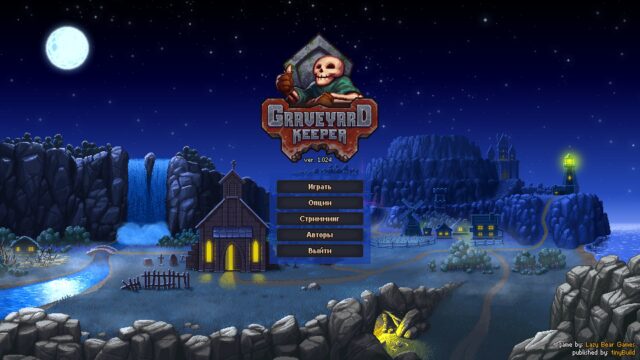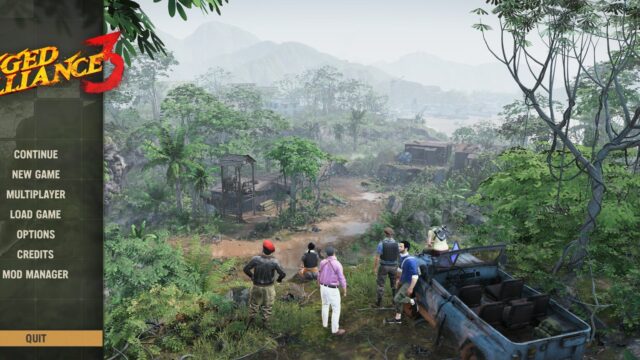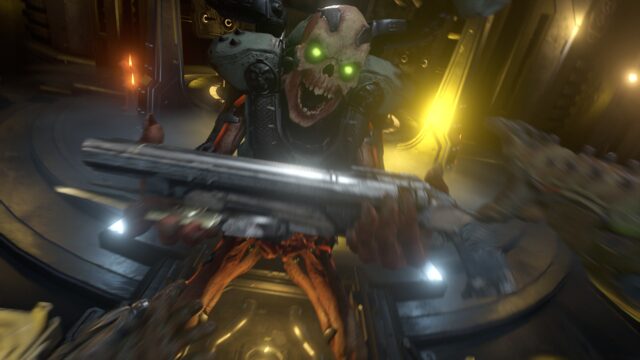Just Cause 3 Review

The evolution of familiar TV shows is such an interesting thing. Digging into the times when now polished blockbusters were scary and clumsy, it’s both funny and enlightening. Remember, for example, what the very first Just Cause tried to be? A Swedish GTA clone about a tropical state coup, which ended up being remembered for nothing but senseless acrobatics. It was a terrible game, to be honest. But then, for the sequel, they added some daring tricks and a lot of destruction, and the Che Guevara simulator slowly started to give way to sandbox entertainment: overthrowing another dictator was, of course, interesting, but no less pleasure was derived from, let’s say, homemade airplane carousels or experiments with C4. In general, by chance or not, Avalanche Studios found their golden vein.
It’s not surprising that the trend was decided to be continued. So what is Just Cause 3 about now? Naturally, it’s about how you attach an explosive-filled tank to a helicopter, ram a huge fuel tanker, soar above all of this on a parachute, and launch a homing missile at a dozen jeeps that have approached the noise. Well, a little bit about revolution too. It seems.
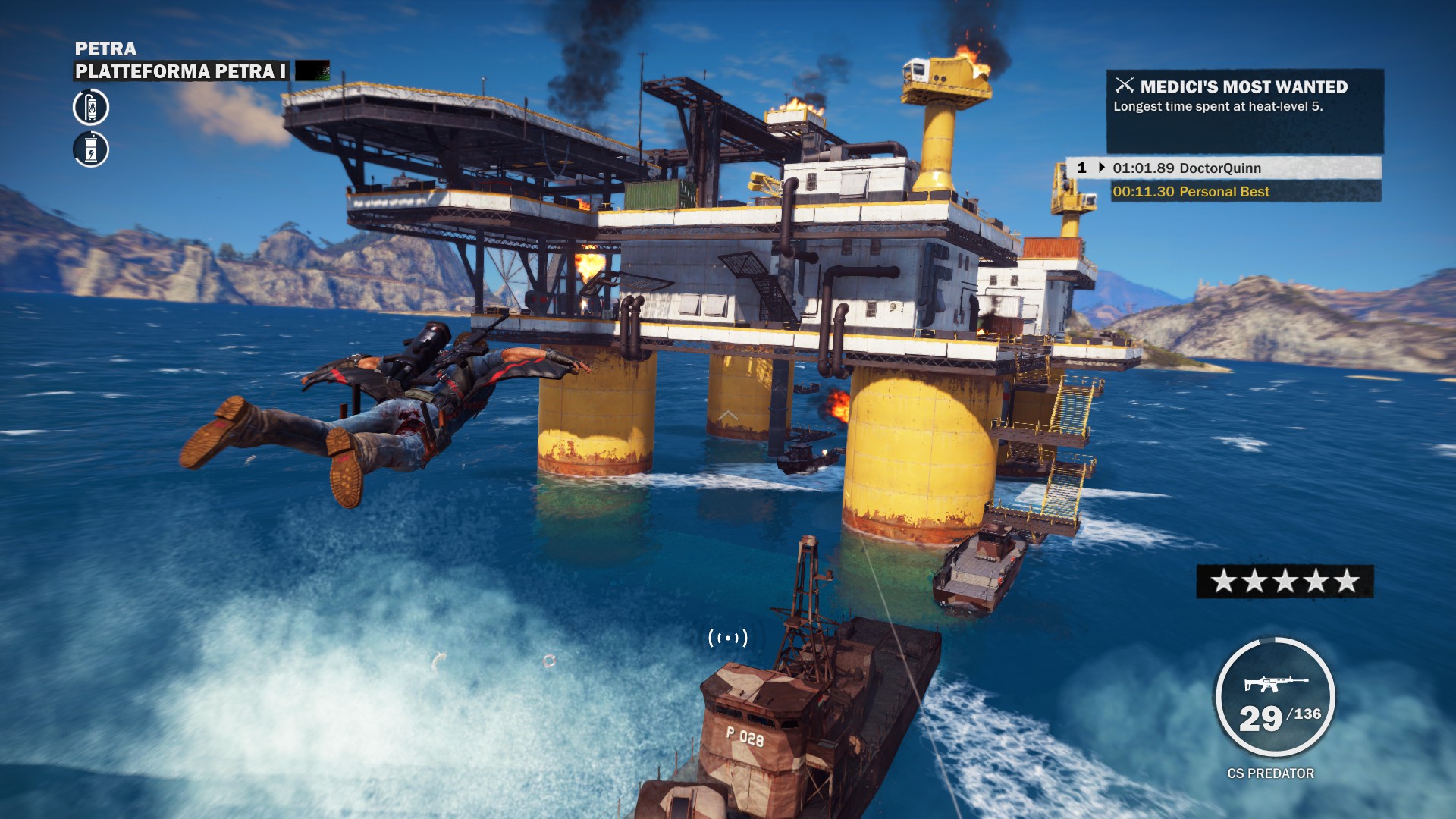

Rico Rodriguez, the unchanging hero of the entire series, returns to his homeland. There, in the glorious Republic of Medici, sparkling with Italian color, his old friends await him and, of course, new enemies: the archipelago is occupied by a despotic general who, in his quest for world domination, has subjugated the local resource and advanced weapons production. He laughs maliciously, shouts threateningly, and cruelly punishes his disobedient subordinates during meal breaks – he is doing everything in his power, in short. Well, we are not averse to getting back to work. Viva la Revolución, or whatever you call it.
In essence, the paragraph above is an exhaustive motivation for action and the only meaningful fragment of the plot. The further narrative, as expected, is superficial and relies solely on deliberately caricatured characters: in Rico’s immediate circle, there is a quirky scientist, a slippery American, dedicated fighters for a just cause, and a warrior lady – and even a childhood friend named Mario with the corresponding accent and a joke about “it’s-a-me.” Their brightness and originality are what keeps you from skipping most of the cutscenes – you can’t help but wonder how the companions will delight you this time. Unfortunately, instead of comedic sketches, their role more often boils down to conversations about the routine of rebellion, so it is difficult to call the potential of the characters fully realized.
The situation somehow changes only towards the end. There, the characters become more alive, and the videos featuring them suddenly gain humor, and then everything works as it should. With proper attention to direction, the staging begins to resemble a good comedic action movie, but what prevented it from maintaining that tone throughout is a mystery. On the other hand, this is Just Cause, which has never been known for meticulous work on the script. Here, the game should be fun, not the story.
And it is fun, do not doubt it. At least, for a considerable amount of time.

Many things that are usually treated with caution and in very small portions in similar projects are dumped on the player’s head in the first minutes of Just Cause 3. Endless explosives, bazookas, grenades, grappling hooks, parachutes, custom armored vehicles – this is only part of the starting arsenal that you can immediately put to use. Obviously, our affairs are predominantly explosive, as we have to reclaim Medici region by region by literally blowing up the enemy’s authority.
On every piece of occupied territory, there are key objects – propaganda speakers, projectors displaying slides of a beautiful future, propaganda posters, antennas, transformers, fuel tanks, and the like – by destroying them, you take away the enemy’s possessions and push them back to the borders. The idea is simple and remains unchanged throughout the game, but thanks to the fantastic combination of signature gameplay elements and, of course, an abundance of fireworks, saving the republic becomes a long-lasting amusement. The zones vary in difficulty (from small settlements to fortified forts), so there is always an opportunity to choose a playground to your liking and unleash any kind of chaos on it. Grenade madness among igniting containers, staged sabotage with simultaneous detonation, parachute bombing, tank assault, or helicopter clearance – Just Cause 3 always has the means for your experiments.
Despite the fact that the liberation procedures only indirectly relate to the plot and belong to the “sandbox” side of the process, they definitely take a central place in the game. The map is littered with a colossal number of provinces, and you want to start fighting for them right after a short prologue because it is engaging, diverse, and spectacular. Almost as if the “Mayhem” side job from Saints Row was equipped with gadgets and released into an open world.
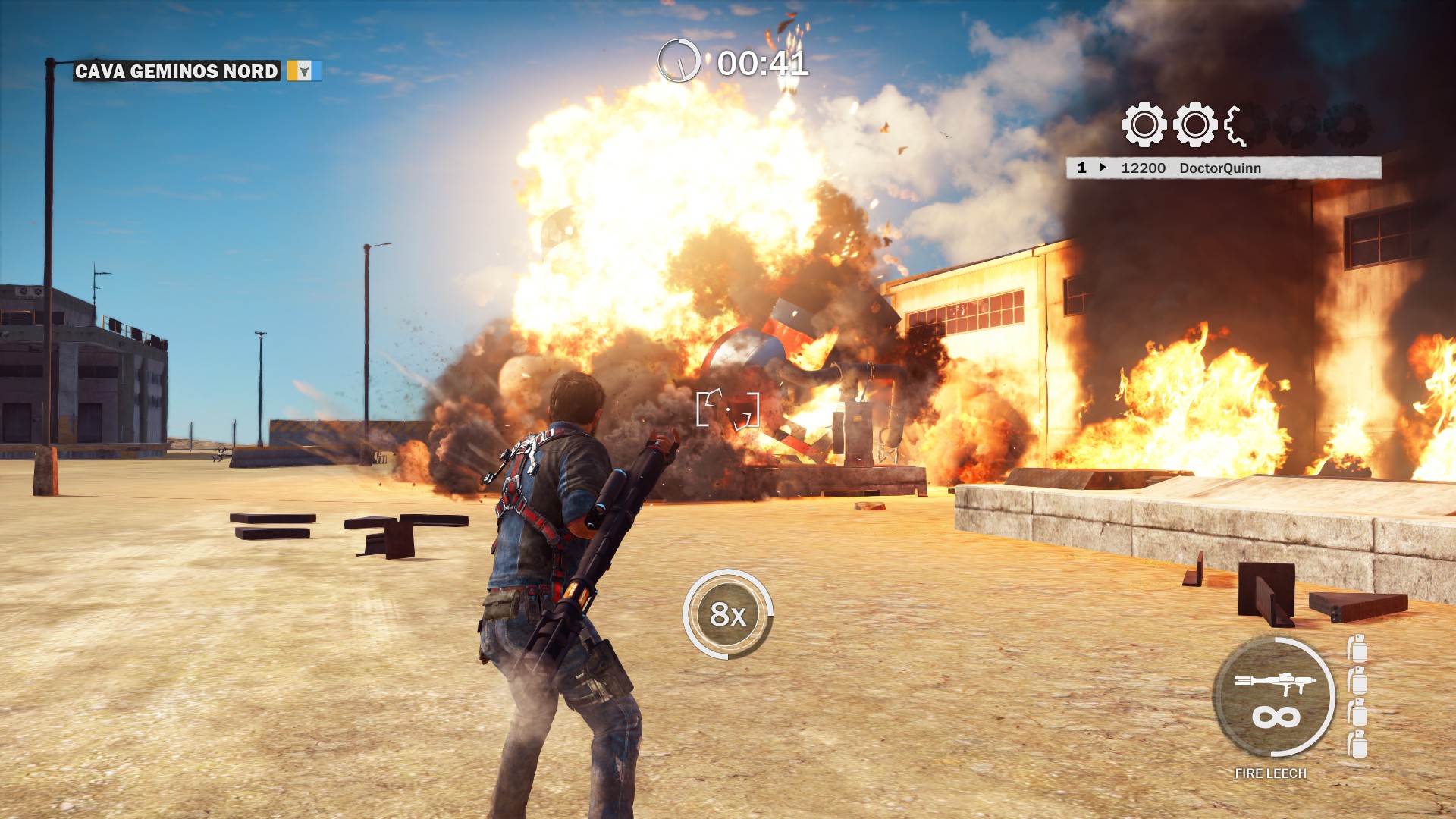
In careers, they let you play “Crazy Rich Asians” to your heart’s content.
These two games, by the way, are more similar than they may seem. The wingsuit, which Rico now lives in the air with, so successfully complements the hero’s trick inventory that his smooth movement now resembles Saints Row IV with its levitation and effortless wall running. There are also similar drawbacks like sluggish vehicle controls and mechanics of shooting that are far from the best in the world – fortunately, neither of these stands out in the foreground for Avalanche. However, the association with Volition’s creation still remains.
But where the latter compensated for the shortcomings with originality and inventiveness of storyline missions, Just Cause 3 eagerly pushes the same thing. Getting so much fun from shooting at barrels in free mode, you expect at least something similar on scripted rails – but it’s all very sad there. Among the main missions, there are frustratingly many situations of escorting someone somewhere in poorly disguised variations, where you can’t even stray too far, otherwise you’ll be lost and everything will fail.
So you come with joy and explosions on your cheeks for the task, and they tell you: here, protect your friend. Did you handle it? Okay, now he will be driving a car, and you fend off enemies from him. Wow, you’re playing so well! Now let’s have two partners – one in a helicopter, the other in a car. Or no, you will all protect the cargo and another partner! Exactly! In such moments, the game seems more fun than to you.
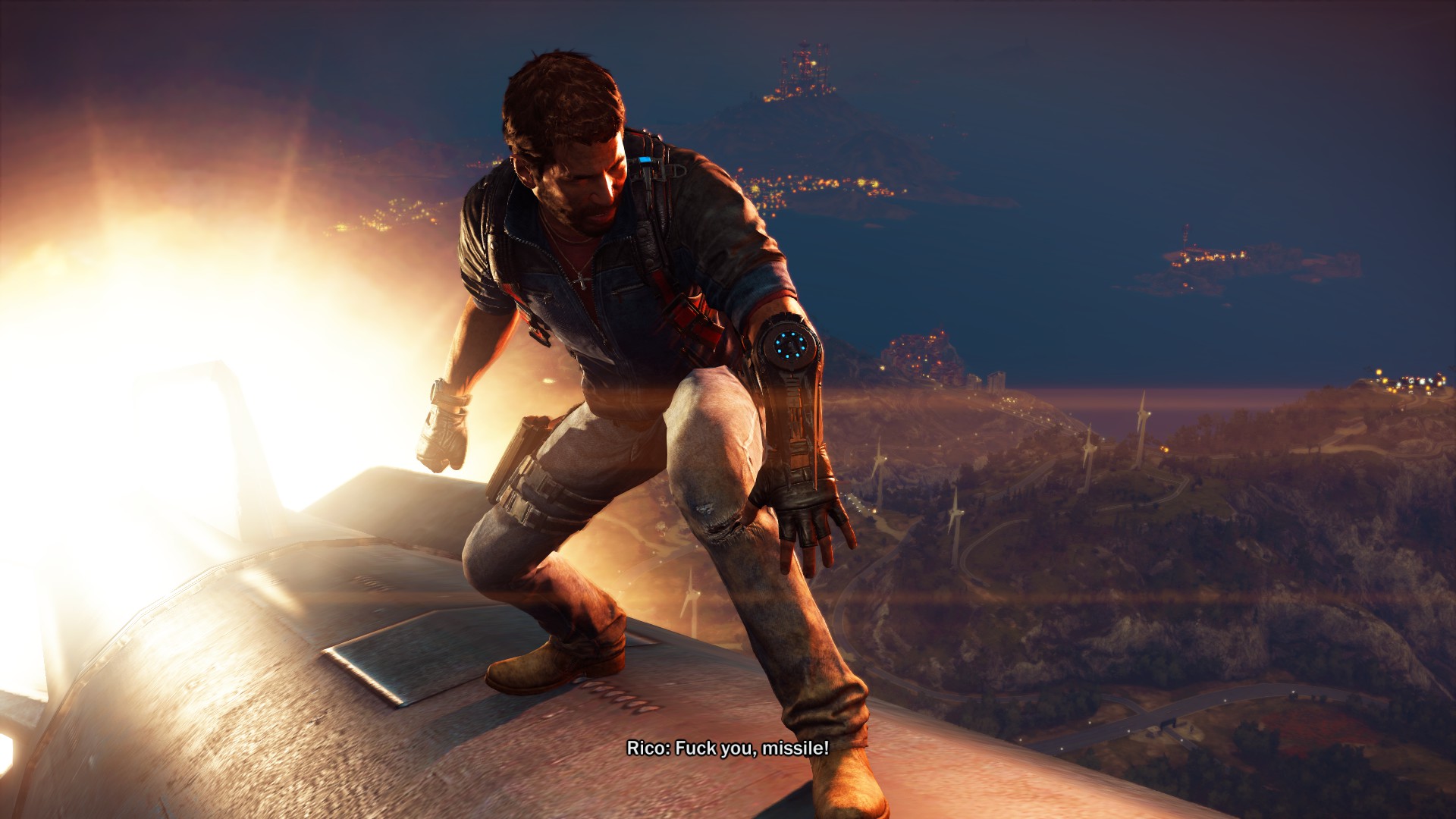
According to the plot, among other things, we will have a nice conversation with a warhead…
Interesting tasks are naturally the units in the whole list. They are criminally short, but impressive and memorable: sometimes you will be called to shoot down fighters from an airplane, sometimes to hijack a tank with a force field, sometimes you will be forced to saddle a warhead – a pinch of staged madness gives Just Cause 3 a special charm and novelty. And you can bomb cars in free play.
At the same time, it is particularly annoying that access to the plot twists must be earned at certain stages by liberating provinces on an industrial scale. No, undoubtedly, it’s insanely cool to fly around the archipelago and destroy everything with red ribbons, but not 15-20 times in a row. Forced freedom becomes tedious at some point, and you want to get rid of it as quickly as possible with the most banal and boring methods – for a game that cannot stand ordinariness, it is akin to death. And when, as a reward for titanic and monotonous labor, you are given another mission with a convoy, any desire to return to the plot disappears even more.
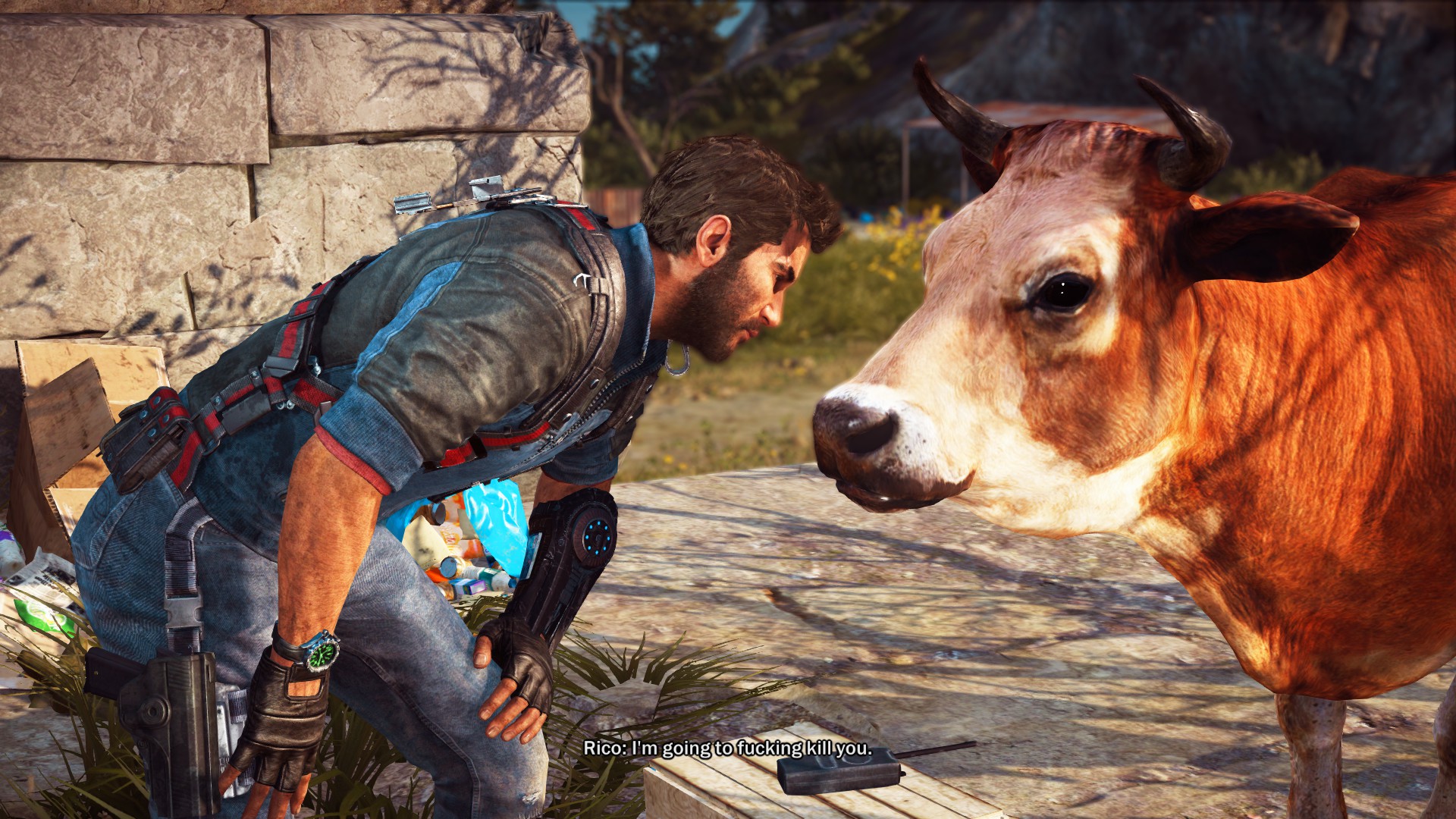
…and let’s try to start a romance with a cow.
If cleaning up key objects can be tiring, searching for them is an even less exciting pastime. Moreover, the first two regions are relatively densely populated, which eliminates such a problem, but on the vast land, it’s terribly annoying. Cities, visible from many kilometers away, contrast with checkpoints, which you can’t find during the day – not even with a flame or helicopter. We never understood why they hid the location of the targets, but considering the size of the map, sometimes you have to roam around hoping to discover that very last post for dozens of minutes.
The environment itself does not encourage exploration – the pursuit of square kilometers has led to Just Cause 3 being hopelessly empty. In the initial locations, this is not felt strongly due to compactness, but further on, the sense of scale begins to falter. Miniature clusters of houses suddenly break up with six or seven-kilometer roads, just as cold as the giant mountains on the horizon. Naturally, it becomes completely unprofitable to traverse such distances by car, and even air transport barely helps. There is nothing between settlements that justifies long marathons from point to point – even random tasks from clumsy citizens willing to wait for years for you to push their boat into the water appear close to civilization.
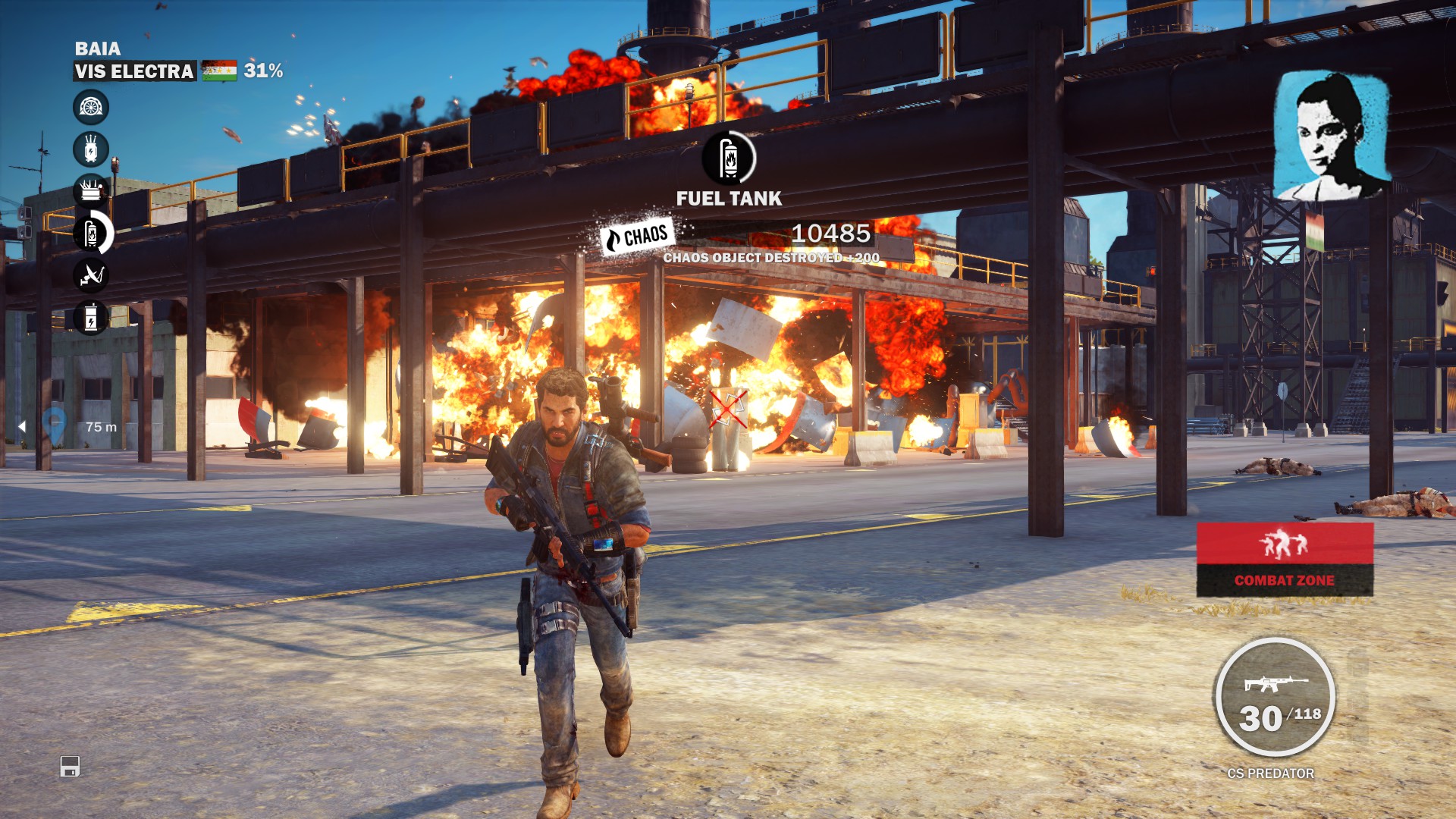
The only justification for the existing spaces is the magnificent graphic execution. In some places, the game may lag behind its major counterparts in terms of the season, but 90% of the time its visuals are simply wonderful. The series has finally moved away from its dull palette and burst into a juicy color scheme, transforming and enlivening the world of Just Cause, raising it to the aesthetic level of Far Cry 4. In combination with the offered drive and spectacle, this is especially important: mass destruction would not have caused half of the current enthusiasm if it were not accompanied by such colorful explosions.
Numerous improvements are supposed to make the process more fun, but they are not given easily. With the capture of a province, challenges appear on its territory, the completion of which advances you along the corresponding skill tree and unlocks “modifications”: some make life easier for anyone by increasing ammunition and speed, while others (such as reactive charges) are suitable only for specific needs and styles – that’s why they can be turned on and off at any time, adjusting to the moment. The list of upgrades does not hold any special surprises, but almost all of them have a positive impact on the destructive-explosive action, so you want to master them completely.
Everything would be fine, but these challenges are monotonous and dull. Only tasks like destroying a base within a time limit or racing on mined vehicles hardly get boring – precisely because they offer endless, albeit specialized, ammunition and/or non-standard conditions. However, completing boring checkpoint races, in which the maximum score cannot be achieved without upgrades, becomes a chore by the fourth attempt.
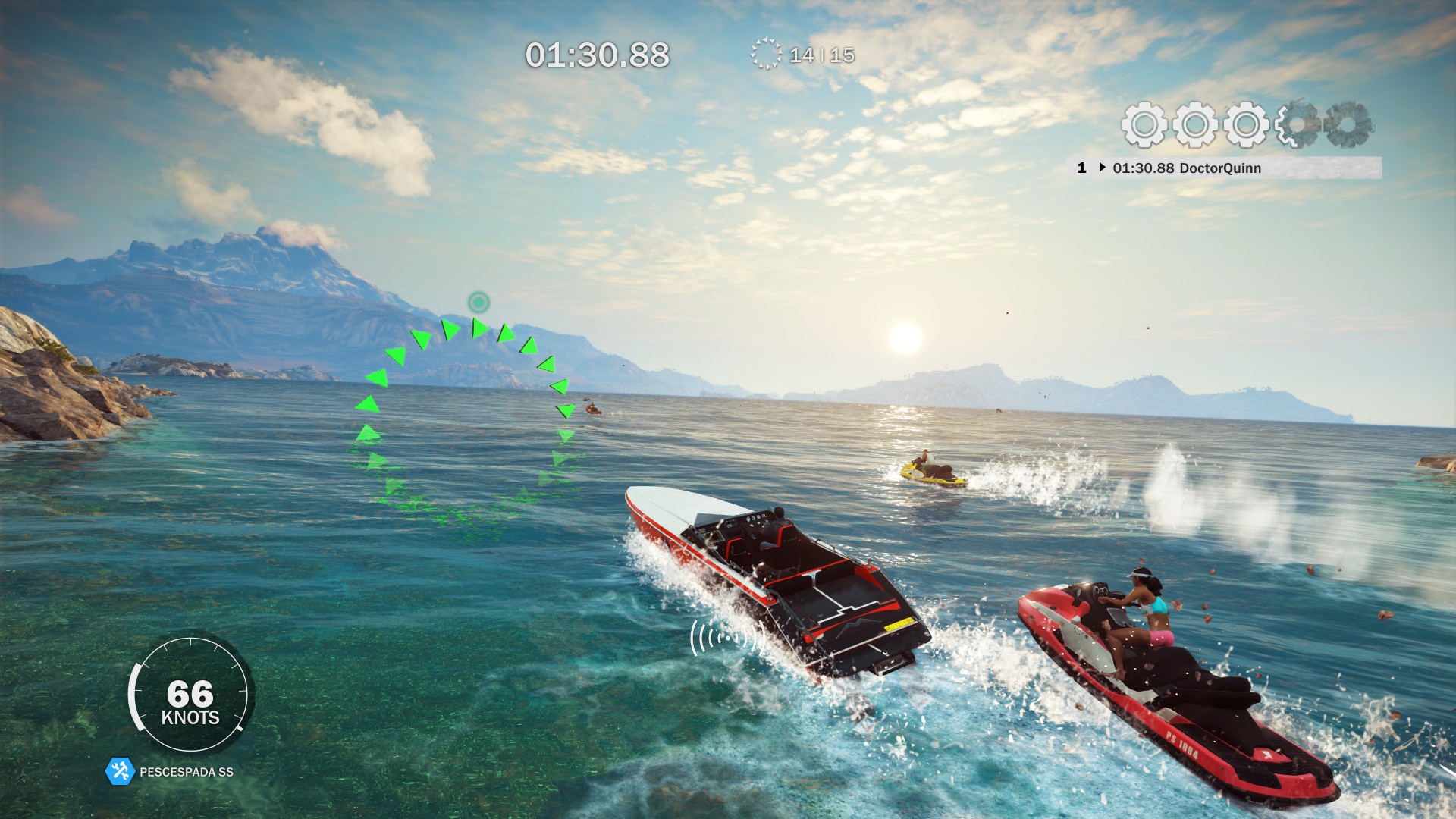

But that doesn’t prevent you from enjoying the game sincerely if you know how to please yourself. The toolkit for self-entertainment here is extensive enough to easily spend at least 40-50 hours in Medici without any challenges or missions. Don’t fall for the plot’s provocations and don’t rush to see the end of the story, because the most genuine emotions arise only in free exploration. Slowly blow up bases, come up with elaborate tricks, collect cars, experiment with physics and modifications – no one prevents you from alternating these activities. The main thing is to approach everything with enthusiasm. The sandbox in Just Cause 3 has much greater significance than in GTA, to which it was once equal.
On the third try, Avalanche managed to create the perfect game for occasional visits. The friendliest, brightest, and most diverse in the entire series, Just Cause 3 can be tiring during long sessions, but after a short break, it will definitely lure you back for a new dose of explosive drive, which you are guaranteed to get.
Share
Discuss
More Reviews
